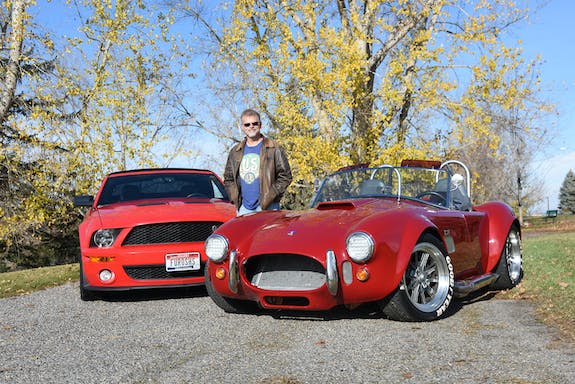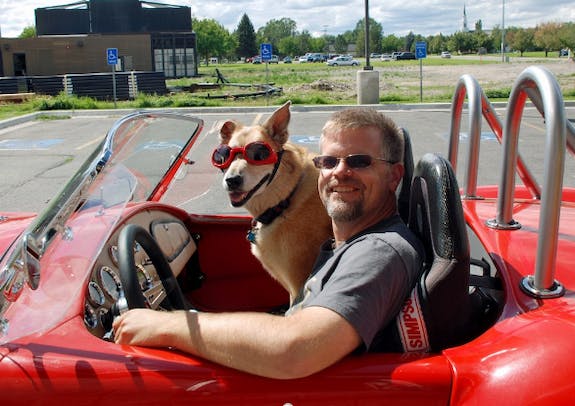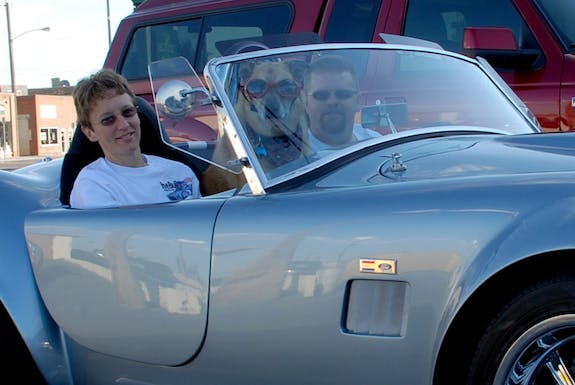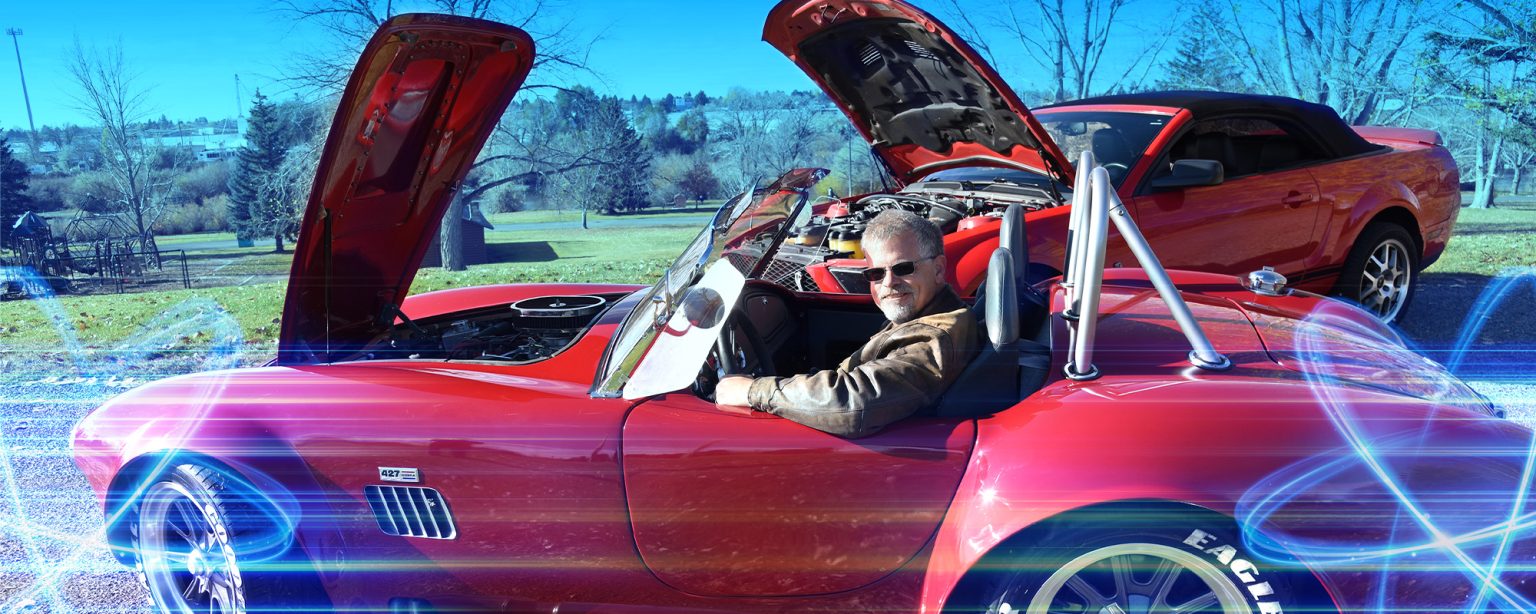Joe Campbell is what many would call an extreme “gearhead.”
For him, it’s all about creating a car that is completely his own, a process that includes restoring, customizing, and in some cases, building replica kit cars from scratch.
These kits tend to get the custom treatment, like others in his meager collection of cars as he aims to make them a one-of-a-kind vehicle suited to his style and personality.
His current favorite? His third replica of a 1965 Shelby Cobra.

“There’s no other car I can think of that has such a raw, untamed driving experience,” Campbell said. “Most modern cars have gotten so heavy and bulky to meet current crash standards, but it makes them feel numb. Driving the Cobra on a twisty mountain road is really a sublime experience. There really isn’t anything more fun on the planet.”
Origins of the Cobra
The Cobra is itself a custom creation dreamed up by legendary car racer and automotive designer Carroll Shelby. Renown for being a daring customizer, Shelby took the excellent handling and lightweight chassis of the British-manufactured AC Ace and “Americanized” it by swapping out the puny four-cylinder motor with big-block V-8 engines.
Fewer than 900 Shelby Cobras still exist and tend to sell for millions of dollars at auctions around the world. Replicas are what most car enthusiasts can find and afford if they are craving that unique, audacious driving experience the originals offer.
Building a kit car
Building a Cobra replica starts with ordering the kit with specifications. The bare frame and body come on a truck and pallet with boxes of parts. Once everything is inventoried, the builder can start assembling the chassis by putting in the brakes, fuel system, wiring, pedal box and suspension — all the components that make the car stop and go.

After all the components have been tested, the body can be placed on top of the kit’s frame, making the vehicle look more like a car and less like a massively overpowered go-cart.
“There are so many potential upgrades and ways to customize that you can get caught up in the little things. It takes self-discipline to avoid losing focus on the initial goal,” Campbell said. “I also tend to get a bit distracted with other ideas and have to look for a new project from time to time.”
The thought of building an entire car from scratch may sound daunting to some, but in Campbell’s eyes, there’s no other feeling like it, especially now that the digital world is filled with endless resources for builders to pull from.
“Don’t let the technical challenge of building a car stop you,” he said. “Forums exist for Cobras specifically, builders blog on their projects and lessons learned from others and there are countless videos. Fellow builders online are always around to provide guidance, too. Dig in and do the research.”
Supporting a one-of-a-kind test reactor
Outside of his garage, Campbell is a communications specialist at the Advanced Test Reactor (ATR) Complex. Not unlike his replica Cobras, ATR is a one-of-a-kind test reactor that provides the results of research in weeks to months that would take years in other testing environments. This unprecedented testing capability allows ATR to support a wide range of vital missions for research, academia and groups like the nation’s military.
To maintain its position as the most powerful test reactor in the world, ATR recently completed a major overhaul known as the core internals changeout (CIC). This process occurs once every 10 years on average and includes replacing the reactor’s core components to ensure it can continue essential functions for years to come. For Campbell, there are plenty of comparisons between his hobby and his mission at work.

“CIC is really a lot like a car restoration,” Campbell said. “High-performance motors need to be rebuilt to replace parts like bearings that wear out over time. With CIC we did the same thing, replacing parts like the reflectors that see a lot of wear during ATR’s busy operating schedule. It’s very much like rebuilding a car’s engine and looking for ways to improve it. More often than not, these comparisons make the light come on for visitors when explaining what we do and why.”
Though car restoration and building can seem intimidating, Campbell said it’s never too late for those who want to get started.
“Other builders are usually more than happy to offer advice and help with projects, and you can always find answers – and new friends – on online forums of all kinds. I’ve been able to help a lot of fellow builders that way.”
Hobbies are fulfilling, and fulfilled people make more productive employees. Hobbies unearth hidden skills, alleviate stress, unite you with others, and improve quality of life — all things that will help you function better at work. See other stories about Idaho National Lab employees.







